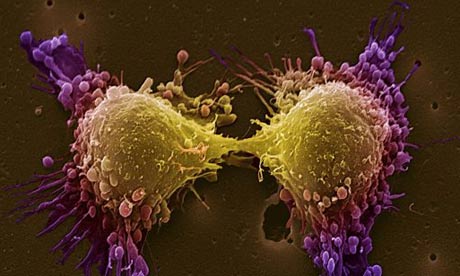Vitamine D is Key in Preventing Bladder Cancer
October 30, 2012 1 Comment
By LUIS MIRANDA | THE REAL AGENDA | OCTOBER 30, 2012
Having high levels of vitamin D protects against cancer of the bladder. This is the conclusion reached by molecular biologists and epidemiologists from the National Cancer Research Centre (CNIO) in Spain after taking blood samples from more than 2,000 people from 18 Spanish hospitals — where half of the samples belonged to healthy people and half were from patients with cancer. The researchers then compared their biological material. The results of the study are published today in the Journal of the National Cancer Institute (JNCI).
“We have seen that subjects with higher levels of 25 (OH) D3, a stable form of vitamin D in the blood, are those with a lower risk for bladder cancer, and, conversely, that low levels are linked to an increased risk of developing it,” says Nuria Malats, group head of genetics and molecular epidemiology at CNIO.
The relationship between the presence of certain amounts of vitamin D and cancer processes is not casual, said the researchers. “We have shown by molecular analyzes that vitamin D acts by enhancing the expression of a protein [called FGFR3] that slows the aggressiveness of this neoplasm as it inhibits the differentiation of malignant cells and tumor proliferation,” adds the researcher. The protective effect of vitamin lies in this property, which also manifests more intensely against more aggressive tumors, “which is very important and has never been described,” said Malats.
The protective power of vitamin D against other tumors, such as colon or breast has been known for a while, but not in detail. Studies conducted on vitamin D’s power to fight other kinds of cancer have been done in small groups, and the results of that research pointed in the same direction that the bladder studies go. But none had proven so conclusive nor had described in such detail how this molecule prevents cancer, highlight researchers. “We found that high levels of vitamin D decreased mainly, the risk of developing invasive bladder tumors, which are more likely to metastasize” says André Amaral, first author of the study.
Malats says that levels above 30 nanograms per millilitre of blood is considered adequate vitamin D rates to take preventive effect against bladder cancer. The results of the study population by CNIO researchers suggest that the Spanish people are, on average, well below this amount. “Of the 1,000 people chosen as a control population, only 74, less than 10%, were above levels considered preventive,” says the researcher.
You would think that the results should be higher. The most important aid in producing vitamin D is sun light, although this compound is also present in foods such as nuts or fish. Therefore, it would be normal in a country with so many hours of sunshine as people enjoy in Spain, that the population had high levels of vitamin D. And yet, in the United States or in the countries of northern Europe, the levels are higher.
Several reasons explain this apparent paradox, says Malats. On one hand, people with light skin tones are more efficient synthesizing vitamin D, enough so that they spend less time in the sun to generate the molecule. This explains the highest rates in the Nordic countries. On the other hand, in countries like the U.S., is often added to foods (such as milk) vitamin supplements, raising the levels of these substances in the population.
The researchers suggest that increased vitamin D intake, either through diet or supplements, or through an increase controlled sun exposure, can be beneficial in terms of prevention of bladder cancer. A new study by the same team of the CNIO is considering whether, besides preventive effects, vitamin D can also be useful as a treatment in patients who have already developed tumors.
Bladder cancer is the fourth most common among men, after prostate, lung and colorectal. Each year there are 11,200 new cases, of which 30% are highly aggressive and can endanger the patient’s life.
The Real Agenda encourages the sharing of its original content ONLY through the tools provided at the bottom of every article. Please DON’T copy articles from The Real Agenda and redistribute by email or post to the web.


